This article was medically reviewed by Lacy Windham, MD. Lacy Windham, MD, is a Board-Certified Obstetrician & Gynecologist in Cleveland, Tennessee. Dr. Windham attended medical school at the University of Tennessee Health Science Center in Memphis. Her residency was completed at Eastern Virginia Medical School in Norfolk, Virginia. She was the recipient of multiple awards during her residency training, including Most Outstanding Resident in Maternal Fetal Medicine, Most Outstanding Resident in Oncology, Most Outstanding Resident Overall, and Special Award in Minimally Invasive Surgery.
There are 18 references cited in this article, which can be found at the bottom of the page.
This article has been viewed 249,038 times.
Researchers know that yeast infections, also knows as Candidiasis, are most commonly found on a person’s skin, mouth, or vaginal region.[1] A yeast infection is caused by various fungi of the Candida spp. family, of which there are more than 20 different species that can infect humans. The most common cause of yeast infection is due to overgrowth of Candida albicans. Experts note that yeast infections can be very uncomfortable, so it is important to begin treatment as soon as you notice symptoms.[2] If you think you are getting a yeast infection, there are some methods that can help you stop it from developing further.
Steps
Preventing Yeast Infections From Worsening Naturally
-
1Eat probiotic yogurt. There is a type of yogurt that has helpful bacteria in it that can help combat developing yeast infections. Yogurt with lactobacillus acidophilus has been used by women, either orally or applied vaginally, to help combat developing yeast infections. Lactobacillus acidophilus is a good bacteria that can help you to fight the bacteria causing your yeast infection. You can buy this kind of yogurt at most grocery stores. Make sure to check the label to ensure that it has active and live lactobacillus acidophilus cultures in it.
-
2Bathe twice a day. While taking a shower or bath two times a day can throw off your daily schedule, it is important that you stay as clean as possible to combat your yeast infection. When you bathe, do not use any chemical soap or body wash. These kinds of soaps can kill good bacteria that you need to fight your infection, while doing very little to reduce your infection.[5]
- Women with vaginal yeast infections should take baths rather than showers. Taking a bath can help to clear yeast from the vaginal area.
- Make sure your bath isn't too hot. This can cause yeast to multiply.[6]
Advertisement -
3Use clean towels. When you bathe, go swimming, or dry off with a towel, it is important that you dry off as thoroughly as possible. Yeast thrives in warm, damp places, so use a clean, dry towel to get rid of any lingering moisture. If you use a towel that you used before, you might transfer yeast to it, which can thrive on the dampness left behind from your previous shower. Instead, wash your towels after you have used them once.[7]
-
4Wear loose clothing. If you have a skin or vaginal yeast infection, it is important to wear loose-fitting clothes that will allow your skin to breath. This is particularly important if you have a vaginal yeast infection. Wear cotton underwear and avoid any underwear made with silk or nylon, as these two fabrics do not let any air through.
- Avoid activities that cause unnecessary heat, sweat, and moisture in affected areas in order to help prevent further growth of the yeast.[8]
-
5Avoid certain skin products. When you are getting a yeast infection, avoid using any products that might make the infection worse. In particular, it is important to avoid soaps that could wash away good bacteria, as well as feminine hygiene sprays or powders. You should also not use certain lotions, since they can keep your skin moist and cause the skin to retain heat and liquid.
Treating Yeast Infections with Medication
-
1Use medication on your skin. There are certain medications that can help combat a yeast infection on your skin. For skin infections, doctors generally recommend antifungal creams that are applied directly to the affected area. These creams will generally clear the infection within a couple of week. The two most common antifungal creams for yeast infections on the skin include miconazole and oxiconazole. The cream have general instructions for application, but make sure you follow the doctor's instructions carefully.
- To use cream for your skin yeast infections, wash the affected area with water and then dry it off very thoroughly. The skin should not be moist at all. Apply the recommended amount of cream as indicated by your doctor or the manufacturer's instructions. Let it absorb into your skin before you reapply clothing or do any activities that might cause the area to rub against another object or material. [11]
-
2Treat a vaginal yeast infection. To fight a vaginal yeast infection, you can get over the counter medications or get a prescription from your doctor. For infrequent episodes of yeast infections that only have mild to moderate symptoms, you can use over the counter medication that either comes as a cream, tablet, or suppository that gets inserted directly into your vagina.[12]
- The common yeast-fighting medical creams include miconazole (Monistat) and terconazole (Terazol). They are generally used as a cream or suppository, given intravaginally every day at bedtime, for as many days as specified in the instructions. You can get medications that last one to seven days.
- You can also get oral antifungal medication that can be taken, such as clotrimazole (Myecelex) and fluconazole (Diflucan), which you take by mouth.
- You can also take clotrimazole as tablets, which are taken intravaginally at 100mg every day at bedtime for six to seven days, 200mg every night for 3 days, or 500mg daily for 1 day.[13]
- Some yeast infections may be more complicated. These have to be treated for seven to 14 days, rather than one to seven days.
-
3Ask your doctor about boric acid. Boric acid is available for yeast infections as a vaginal insert suppository by a prescription. This may provide relief from infections that occur frequently if conventional treatments have not been as effective as expected. Additionally, boric acid may provide increased resistance against other strains of candida that may have become resistant to certain antifungal medications over time.
- Boric acid is toxic, especially to children when ingested, and can cause irritation to skin.[14]
- Abstain from oral sex while using boric acid so your partner does not ingest the toxic acid.
-
4Stop oral yeast infections with medical mouthwash. If you develop a mouth yeast infection, you can combat it with medical mouthwash with antifungal capabilities. To use this medication, you swish it around in your mouth for a short time and then swallow it. The medicine helps the surface of your mouth as well as from inside your body after you swallow it. Also talk to a doctor about additional prescription oral medications that you can take. Oral antifungal medications also come in the form of tablets and lozenges.
- If you have a very weakened immune system and are combating other illnesses like cancer or HIV, your doctor may also prescribe Amphotericin B, a medication that combats oral yeast infections that have become immune to antifungal medications.[15]
Understanding Yeast Infections
-
1Recognize the signs. If you want to prevent a developing yeast infection, you need to be able to recognize the signs of one. There are three types of yeast infections. There are infections that affect the skin, the mouth, and the vagina.
- Symptoms of a mouth yeast infection, also called oral thrush, are creamy patches of white in the throat or mouth region or painful cracks at the corners of your lips.
- Skin yeast infections cause blisters, red patches of skin, or skin rashes, which are most commonly found between the toes and fingers, under the breast, and around the groin area. Skin yeast infections can also affect the penis. The symptoms can be the same, but the penis can also develop white patches of skin or moist areas of skin with a white substance collecting in skin folds.[16]
- Vaginal yeast infections are common, and causes increased vaginal discharge that may be thick, white, and curd-like, mild to moderate itching, and internal vaginal skin irritation and redness.
-
2Consider the general risk factors. There are many risk factors that can contribute to yeast infections. If you suffer from a disorder that compromises the immune system, such as HIV, it will open up increased possibilities for infection because the body is unable to properly defend itself against outside sources. If you are taking antibiotics, you are also more likely to get a yeast infection. Antibacterial therapies, such as antibiotics, serve to fight against infections, but they can also reduce the number of bacteria that live on your body and play a role in protecting you from other types of infections, such as yeast infections. In these cases, a yeast infection may occur if it is provided a surface to effectively multiply on, such as the skin, penis, or vagina.
-
3Look for the gender specific risk factors. Women with hormonal fluctuations, due to menopause, birth control pills, pregnancy, or premenstrual syndrome, can be more susceptible to yeast infections because of the physical stressors the hormonal changes cause. Women may also be prone to yeast infections through the use of douches and chemical irritants. While well-intentioned, these can alter the natural pH balance of the vagina, which naturally creates an environment that is difficult for foreign bacteria to infect.
-
4Reduce the possibility of a yeast infection. There are general ways you can prevent yeast infections. Only use antibiotics when absolutely necessary, so your body keeps its natural bacteria that fights off yeast infections.[22] Since steroids can cause immune system problems, reduce or minimize the use of inhaled and other steroids. Try to stay away from moist environments and clothes. If you are in moist clothes, try to change out of them as soon as possible.[23]
- Yeast infections can grow in the mouth, especially in those with diabetes and those with dentures. To prevent this issue with dentures, keep your dentures clean and use well-fitting dentures. For other instances, the yeast will remain dormant until a trigger, such as antibiotic use, causes it to manifest.
- Women should avoid douching if at all possible.[24]
- If you have diabetes, always do your best to keep it controlled and keep your skin healthy.[25]
Warnings
- If you keep getting recurrent yeast infections, see a doctor rather than just keep taking OTC products. It may not actually be yeast, or could be an unusual strain of yeast. Also, you may need to be tested for other medical conditions (like diabetes).⧼thumbs_response⧽
- While some home remedies can be helpful in combating symptoms of yeast infections, and can even do their part to treat yeast infections, it is always good to combine these home remedies with medication purchased at a pharmacy. Always consult with your doctor to understand the risks and benefits of attempting an alternative therapy. Some studies have demonstrated positive results, but further research needs to be done before most experts will make confident recommendations.⧼thumbs_response⧽
References
- ↑ https://www.plannedparenthood.org/learn/health-and-wellness/vaginitis/what-yeast-infection
- ↑ https://www.cdc.gov/fungal/diseases/candidiasis/genital/index.html
- ↑ http://www.mayoclinic.org/diseases-conditions/yeast-infection/basics/alternative-medicine/con-20035129
- ↑ http://www.mayoclinic.org/drugs-supplements/acidophilus/background/hrb-20058615
- ↑ Domino, F. (n.d.). The 5-minute clinical consult standard 2015 (23rd ed.)
- ↑ http://www.mayoclinic.org/diseases-conditions/yeast-infection/basics/prevention/con-20035129
- ↑ https://www.nlm.nih.gov/medlineplus/ency/article/001511.htm
- ↑ http://www.mayoclinic.org/diseases-conditions/yeast-infection/basics/prevention/con-20035129
- ↑ http://www.nlm.nih.gov/medlineplus/ency/article/001511.htm
- ↑ Domino, F. (n.d.). The 5-minute clinical consult standard 2015 (23rd ed.)
- ↑ https://patient.info/infections/fungal-infections/candidal-skin-infection-yeast-infection
- ↑ http://www.mayoclinic.org/diseases-conditions/yeast-infection/basics/treatment/con-20035129
- ↑ Domino, F. (n.d.). The 5-minute clinical consult standard 2015 (23rd ed.)
- ↑ http://www.mayoclinic.org/diseases-conditions/yeast-infection/basics/alternative-medicine/con-20035129
- ↑ http://www.mayoclinic.org/diseases-conditions/oral-thrush/basics/treatment/con-20022381
- ↑ http://www.mayoclinic.org/male-yeast-infection/expert-answers/faq-20058464
- ↑ http://www.mayoclinic.org/male-yeast-infection/expert-answers/faq-20058464
- ↑ http://www.medicinenet.com/image-collection/baby_yeast_infections_picture/picture.htm
- ↑ http://www.emedicinehealth.com/yeast_infection_diaper_rash/article_em.htm
- ↑ Domino, F. (n.d.). The 5-minute clinical consult standard 2015 (23rd ed.)
- ↑ http://www.mayoclinic.org/male-yeast-infection/expert-answers/faq-20058464
- ↑ https://msu.edu/~eisthen/yeast/causes.html
- ↑ http://www.nlm.nih.gov/medlineplus/ency/article/001511.htm
- ↑ Shubair M, Stanek R, White S, Larsen B.Effects of chlorhexidine gluconate douche on normal vaginal flora.Gynecol Obstet Invest. 1992;34(4):229-33.
- ↑ http://www.mayoclinic.org/diseases-conditions/yeast-infection/basics/symptoms/con-20035129
About This Article
To stop a developing yeast infection, visit your doctor, who will probably prescribe a topical antifungal cream to clear up the infection. While you’re waiting for your yeast infection to clear, try to shower twice a day to keep your skin clean. Avoid using scented skin products or sprays, since this can irritate your skin and make your infection worse. After you shower, dry yourself with a clean towel to avoid transferring yeast back onto your skin. You should also wear loose underwear and clothing, which will allow your skin to breathe and prevent moisture from building up. For more tips from our Medical co-author, including how to reduce the risk of getting a yeast infection in the future, read on!



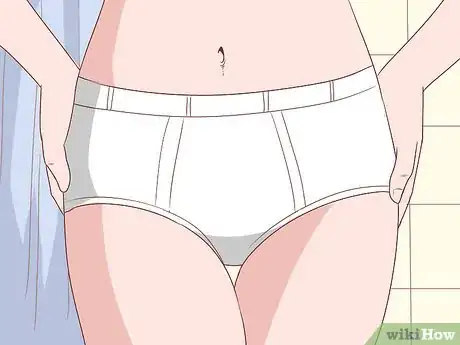
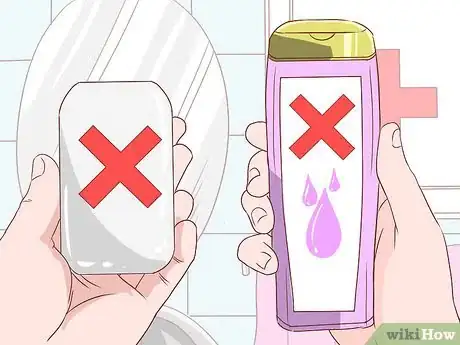

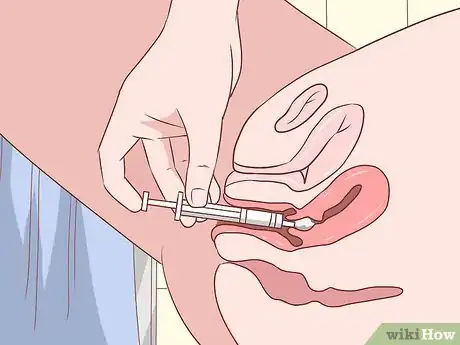
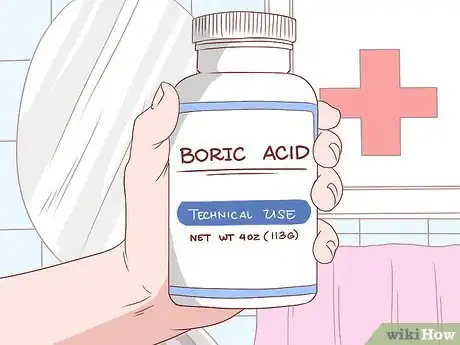
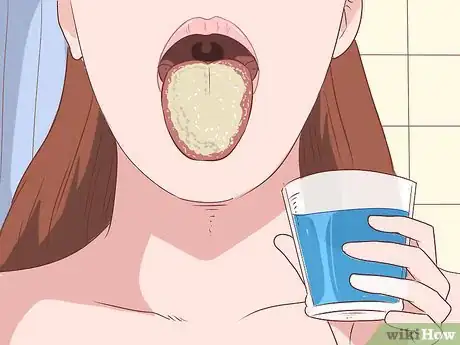
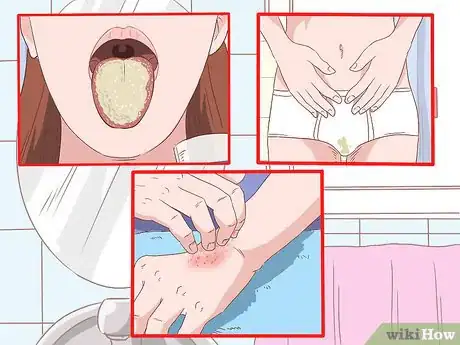





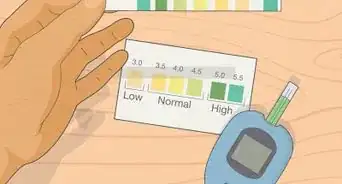




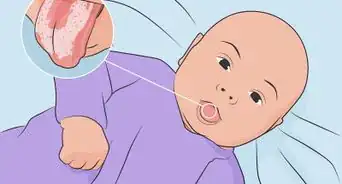
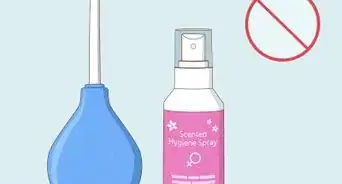



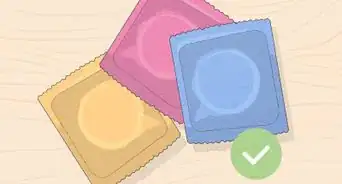
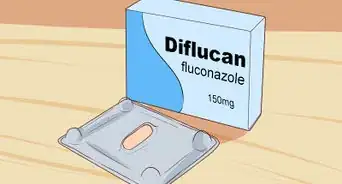












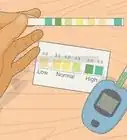
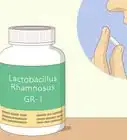



































Medical Disclaimer
The content of this article is not intended to be a substitute for professional medical advice, examination, diagnosis, or treatment. You should always contact your doctor or other qualified healthcare professional before starting, changing, or stopping any kind of health treatment.
Read More...